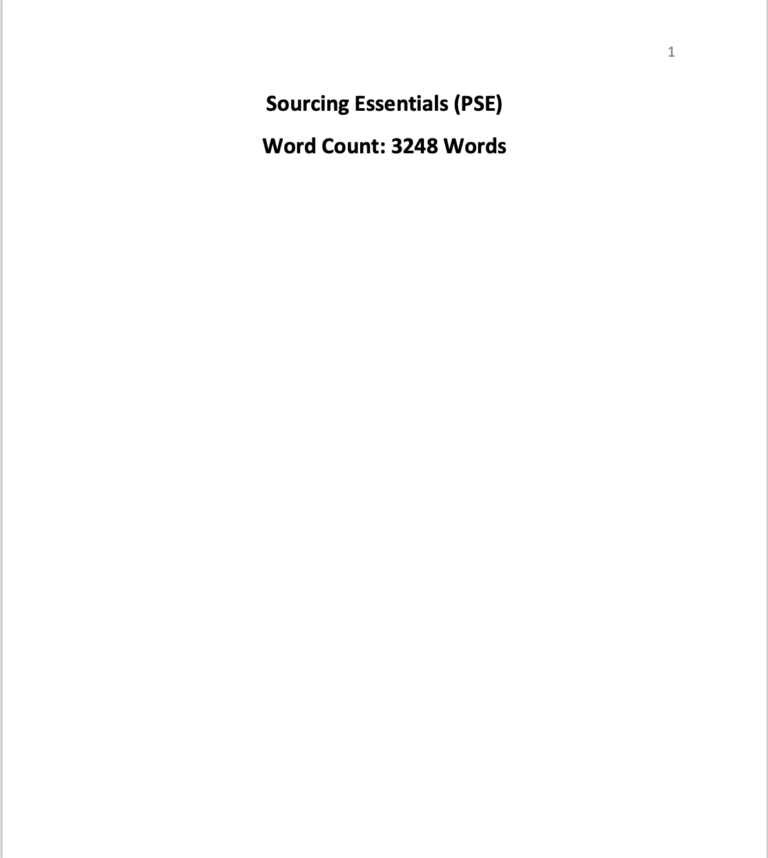Description
Solution
SECTION 2
1.4 Data Analysis
To calculate the percentage turnover for each department, I used the formula:
Turnover Percentage= (Total Employees/Leavers) ×100
2020
- Administration: 4/22×100=18.2%
- Maintenance: 5/9×100=55.6%
- Marketing: 0/4×100=0%
- Production: 70/231×100=30.3%
- People Team: 1/6×100=16.7%
- Research & Design: 1/4×100=25%
- Sales: 19/42×100=45.2%
- Packing & Dispatch: 21/36×100=58.3%
- Finance: 2/5×100=40%
2021
- Administration: 8/20×100=40%
- Maintenance: 3/8×100=37.5%
- Marketing: 0/4×100=0%
- Production: 3/2198×100=16.2%
- People Team: 0/6×100=0%
- Research & Design: 0/3×100=0%
- Sales: 3/35×100=8.6%
- Packing & Despatch: 6/15×100=40%
- Finance: 0/4×100=0%
2022
- Administration: 9/20×100=45%
- Maintenance: 3/8×100=37.5%
- Marketing: 1/4×100=25%
- Production: 3/8178×100=21.3%
- People Team: 3/6×100=50%
- Research & Design: 0/4×100=0%
- Sales: 0/40×100=0%
- Packing & Despatch: 8/16×100=50%
- Finance: 0/4×100=0%
2023
- Administration: 2/18×100=11.1%
- Maintenance: 1/7×100=14.3%
- Marketing: 0/4×100=0%
- Production: 29/181×100=16%
- People Team: 2/5×100=40%
- Research & Design: 1/4×100=25%
- Sales: 2/45×100=4.4%
- Packing & Despatch: 3/15×100=20%
- Finance: 0/3×100=0%
To calculate the overall turnover rate for the entire organization each year, we sum the total number of leavers and total employees, then apply the turnover formula:
Overall Turnover Percentage= (Total Employees/Total Leavers) ×100
2020:
- Total employees = 359
- Total leavers = 123
- Turnover: 123359×100=34.3%
2021:
- Total employees = 285
- Total leavers = 52
- Turnover: 52285×100=18.2%
2022:
- Total employees = 275
- Total leavers = 62
- Turnover: 62275×100=22.5%
2023:
- Total employees = 282
- Total leavers = 40
- Turnover: 40282×100=14.2%
Data Presentation
- Bar Graph-The following is the Bar Graph presenting the year-wise Turnover percentages of each department (2020-2023). It has a graphical display of the turnover rates by department making it less time consuming to determine departments with high or little turnover in the previous years.
Please click the following icon to access this assessment in full
Related Papers
(Solution) CIPS ADNOC Leadership & Management in Procurement and Supply
- In summary, this assessment has focused on evaluating the best practice in achieving a successful leadership and management. In particular, this report has focused on ADNOC offshore company.
- To achieve this, impact of leadership and management on the organisation behaviour has been evaluated, the impact of leadership approaches for job satisfaction and sources of power in an organisation.
- Additionally, the relevance of equality and diversity policies in ADNOC offshore organisation has also been evaluated.
- By application of various tools and techniques such as PESTLE external analysis, this research has hypothesised that for organisations success in their operations, they ought to holistically establish the leadership and management process.
- For leadership, this has a direct impact on organisation behaviours. Further, by achieving leadership and satisfaction, an organisation success is guaranteed.
- Hence, ADNOC has been established to have a successful leadership and management process.
(Solution) CIPS Leadership & Management in Procurement and Supply (APGLM)
For this assessment of Advanced Practitioner Corporate Award, it include a business report which evaluate approaches to leadership and management within the organisation.
The organisation of focus is Hertfordshire and West Essex ICS NHS Procurement Services (HWE). As part of this business report, an evaluation of impact of leadership and management on HWE behaviours, leadership approaches to job satisfaction impact and sources of power and its application.
Further, part of this business report entail an evaluation of the relevance of equality and diversity policies in HWE. To obtain relevant findings in this report, different tools including PESTLE have been used.
Also, leadership styles models have been evaluated to note on their impact on organisation behaviour.
The findings in this report evidence that leadership and management are applied interchangeably. Further, leadership and job satisfaction have a direct correlation.
Also, the CIPS Module Notes and peer reviewed journals and publications note to influence staff wellbeing. The findings also evidence existence of individual-centric leadership process as best contrary to job-centered operating in high-level competitive business sector.
From the stakeholders analysis, by use of Mendelow Matrix, it identify different stakeholders as holding varying powers which are distributed and exercised for organisation success.
Finally, the findings indicate HWE equality and diversity policies as appropriate and relevant for the organisation with optimum gains attained.
From the identified gaps in the analysis, and conclusions made, various recommendations have been identified including;
- Pursue capacity development strategies (coach and mentor others) for facilitating appreciating leadership and management functions as followers
- Integrating situational and transformational leadership and management in HWE
- Investing in effective communication strategy to influence stakeholders functions
- Create a system for ensuring efficiencies in resolving all challenges
- Diversification of eProcurement system to harness equality and diversity of suppliers as part of their operations
- Merge HWE departments in procurement for enhancing efficiencies and eliminating wastes from roles duplicated in leadership and management process
(Solution) New CIPS PDV Market Analysis; Procurement Role in Value for Money Outcomes
(Solution) CIPS Sourcing Essentials Assessment
- In this assessment, sourcing approaches have been identified and holistically reviewed. This is in line with RCU organisation IT spend category. This is further compared with payment services, document management category which is office suppliers and postal services.
- For evaluating the identified spend categories, various tools have been selected which are Kraljic Analysis Tool, Mendelow’s Analysis Tool for Stakeholder analysis and the Maslow Hierarchy of needs.
- Further, by using the SWOT analysis, the internal and external factors of the sourcing have been selected. A further analysis by use of Peter Block Grid’s has been applied to evaluate the interests of stakeholders to source appropriate position.
- The findings indicate that RCU adopts the best sourcing approach based on their needs.
- Finally, by using Carter’s 10Cs model, the best practice for pursuing suppliers appraisal has been provided for IT spend category.



